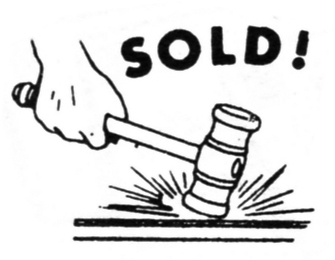Quincy Auctions
 Sticking with the theme of my last post about launching software fast and improving it later, I’m announcing a new web site, Quincy Auctions. We’re going to do a more official launch in a few days, with a press release and such, but I thought I’d try to get some early traffic started to it now to help me find any bugs.
Sticking with the theme of my last post about launching software fast and improving it later, I’m announcing a new web site, Quincy Auctions. We’re going to do a more official launch in a few days, with a press release and such, but I thought I’d try to get some early traffic started to it now to help me find any bugs.
It does one thing: lets you search local auctions that are published online. I like going to auctions, and most of the auctioneers have web sites now where they list things in more detail than they do in the newspaper. But it’s time-consuming to visit all their web sites regularly and search for things you’re interested in. So I thought of writing a program to search them for me, and then I realized other people might find it useful too, so I turned it into a web site. It works like a search engine like Google: if any auctions match your search, you can click the link to go directly to that auctioneer’s site to view the whole listing.
I hope people will find it useful and provide feedback for new features. A couple I’ve got in mind: a Twitter feed and Facebook fan page which would post new auction listings when they appear; and maybe a Google Alerts type of service where people could save a search and get email notices when future auctions match it. It has all the auctioneers whose sites I could find, but I’ll add any that people tell me about. I’m also hoping it’ll make a few nickels from the advertising, and I may offer advertising space to local businesses if there’s interest.
In the meantime, on to the next project!
Technical details:
Programming-wise, the hardest part was scraping the data from all the auctioneers’ sites to make it searchable through the database. Some of them have pretty horrible code, to put it mildly, so parsing out things like dates can be tricky. Once that was done, it was just a matter of building a search form and wrapping it in a decent design. Angel did the logo and fonts for the home page, but we decided to keep it very simple with a lot of whitespace like Google, since it has a similar function.
I programmed the back-end in perl and HTML::Mason. I wanted to make it my first Catalyst project, but I just don’t have the time to learn a new framework right now, so I stuck with what’s familiar. I thought the ‘tag cloud’ of popular searches was a nice touch. I used FeedBurner for the RSS feed and email subscription, because it works so well there’s no point in reinventing that wheel. On the client side, there are a few jQuery touches, and all the design and positioning is done with CSS.
If you enjoyed this article, why not rate it and share it with your friends on Twitter, Facebook, or StumbleUpon?
loading...
